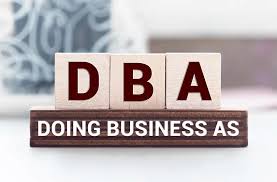Best investment accounts for beginners, adults, and minors are growing more popular as individuals seek strategies to accumulate wealth over time.
According to experts, now is the moment to invest with the stock market at an all-time high! On the stock market, your money can rise quicker than in a savings account. But, before you dig in, you need to understand the various kinds of investment accounts and how they function. In this comprehensive guide, we’ll go through the many kinds of investment accounts, their benefits and drawbacks, and the best accounts for each kind of investor.
You can start investing and expanding your wealth in no time if you have the appropriate information and assistance.
This article will help you find the best investment accounts for your requirements, whether you’re a beginner or a pro.
What is the best account to open for investment?
While deciding on the best kinds of investment accounts for beginners and young investors to establish, consider when and how you want to use the money (education, retirement, etc.), as well as whether the investments are qualifying or non-qualifying.
- Qualified investments provide tax benefits (such as being tax-deferred or tax-free), but they generally have restrictions on eligibility, contribution amounts, and when you may withdraw funds.
- Non-qualifying investments are made with after-tax dollars. Non-qualified accounts allow any adult to contribute without limitations, and the money is liquid and simple to add and take from accounts. Annual taxes are levied on returns such as capital gains or interest.
What is the best investment bank account?
If you’re searching for an investment account, you have several possibilities, ranging from retirement accounts provided by your work to a basic brokerage account. Brokerage accounts are broadly grouped into two types based on whether they are handled by you or by another party, and whether they are taxable or tax-advantaged retirement accounts.
If you’re not sure what sort of account to utilize, working with a professional who can advise you and even manage your assets for you may be the best choice. To identify the correct kind of investment account, you should evaluate your long-term objectives, costs, and the two criteria listed above. These are the best options for the majority of individuals.
Types of Investment Accounts
#1. Brokerage Accounts
Individual brokerage accounts are one of the most simple and adaptable forms of investment accounts available.
Brokerage accounts allow you to purchase and sell investment instruments such as stocks, bonds, mutual funds, and options with minimal limitations via a registered broker.
Being a legal adult with a Social Security number or tax ID number is required for eligibility. To enable adolescent investment, you may set up a custodial brokerage account.
Most investors over the age of 18 create a cash account, which allows them to purchase investments using money they have deposited. (You must be at least 18 years old to invest in stocks on your own.)
You may have either an individual taxable brokerage account, in which you maintain exclusive ownership of the account and are alone responsible for all applicable taxes, or a joint taxable brokerage account.
Two or more people may have a joint account. They are often couples, although they may be anybody.
#2. Money Market Mutual Fund (Cash Equivalents)
A money market fund (as opposed to a money market account) is a mutual fund that solely invests in cash and cash equivalent assets. Certificates of deposit (CDs)
- US Treasuries
- Bankers’ Acceptances are examples of liquid, short-term investments with good credit quality.
- Commercial paper
- Repurchase contracts
Money market funds, like certain other mutual funds, provide investors with redeemable shares and are subject to SEC restrictions. These funds are often regarded as risk-free investments.
Money market funds have minimum initial investment requirements and may be purchased and sold at any time.
There are both tax-free and taxable money market funds. Any returns from a taxable fund are normally subject to ordinary state and federal taxes.
Taxable funds have significantly more alternatives than tax-free accounts. Tax-free funds invest in federally tax-exempt businesses’ short-term debt obligations. They have lower returns to compensate for the tax benefits, making them more appealing to high-income consumers.
#3. 401(k)
Several employers provide them as company-sponsored accounts.
They operate by having you specify a percentage of your income (from each paycheck) to contribute for the year.
This sum is deducted from your salary automatically and sent to a brokerage account, which invests for you depending on your pre-determined investment selections.
Most employers provide target date retirement funds to their workers as Qualified Default Investment Alternatives (QDIA).
This form of investment asset offers a portfolio of underlying assets that invests according to the individual’s desired retirement date.
This takes into account an investor’s risk tolerance, which means that the portfolio has a risk-appropriate investment mix that corresponds to a person’s progress toward retirement.
#4. 403(b) & 457 Plans
A 403(b) plan is similar to a 401(k) plan for employees of non-profit, tax-exempt organizations. Contributions are tax-deferred, which means you pay taxes at the time of withdrawal rather than when you contribute, although tax restrictions and contribution limitations apply.
457 programs are government workers’ equivalents of 401(k)s. In addition to the standard advantages, some employers permit double contributions to 457 plans for employees who are within three years of the plan’s ordinary retirement age.
Employers may provide both a 401(k) or 403(b) plan and a 457 plan. You are permitted to finance both in this circumstance. Early withdrawals from 457 plans are taxed, but there are no additional penalties.
#5. Individual Retirement Account (IRA)
A classic individual retirement account (IRA) enables you to contribute pre-tax income to tax-deferred investments. These accounts utilize pre-tax income in the same way as corporate 401(k)s do.
When you withdraw money (beyond the age of 59.5), you must pay taxes on it.
Donations are often tax-deductible depending on one’s income, filing status, and other considerations. The IRS does not apply income tax on earnings that qualify as tax deductible.
These accounts may be created with a broker (including an internet broker such as Webull or a robo-advisor such as M1 Finance) or with a financial adviser.
#6. SIMPLE IRA
A SIMPLE (Savings Incentive Match Plan) IRA is created by the company and enables workers to contribute to a regular IRA that the business has established.
The employer must pay into the plan in one of two ways: 1. a matching contribution of up to 3% of an employee’s income, or 2. a default contribution of 2% of an employee’s salary (whether the employee contributes or not).
At the time of contribution, employees’ funds fully vest in the SIMPLE IRA. This implies they own the money (including employer contributions) as soon as the employer and employee contributions to the plan.
Workers are eligible for these plans if they have earned at least $5,000 in pay in the previous two years and anticipate earning at least as much in the current year.
Contribution restrictions apply, as with any other retirement account. Withdrawals are penalty-free beginning at the age of 59.5, while RMDs begin at the age of 72.
#7. SEP IRA
Employers may contribute to a regular IRA on behalf of their workers using a SEP (Simplified Employee Pension) IRA. They may contribute up to $61,000, or 25% of each employee’s income.
If the business desires to provide these accounts, it must establish SEP IRAs for all qualified workers. To be eligible, an employee must:
- Be at least 21 years old,
- Have worked for the firm for at least three of the past five years, and
- Have been paid at least $600 in the current year.
Employees cannot contribute to a SEP IRA, unlike 401(k)s and SIMPLE IRAs. Although workers completely vest in the account from the date of account inception, they are subject to the same age restrictions as other retirement accounts.
To avoid fines, workers should not withdraw until they are 59.5 years old and must begin drawing RMDs from the account at the age of 72.
#8. The Health Savings Account (HSA)
Healthcare may be a substantial expenditure for people, and health problems can happen to anybody. An account designated just for paying medical bills is known as a health savings account (HSA).
Contributions to an employer-sponsored account are deducted from your paycheck before taxes. Some employers may allow you to contribute to your HSA via payroll deduction.
You may invest your savings in mutual funds or other investments with Lively and certain accounts. You may withdraw money tax-free at any time for eligible medical costs.
If you withdraw money for anything other than medical needs while under the age of 65, you must pay a 20% penalty.
#9. Account for Flexible Spending (FSA)
Flexible spending accounts (FSAs) are only available via employers and cannot be opened on your own. They are also known as flex spending agreements.
FSAs enable you to set aside a percentage of your earnings to pay for eligible expenditures such as health care or child care. This money is deducted from your paycheck before taxes, so you save the percentage you would have paid in federal taxes on it.
Money in an FSA must be utilized before the end of the year, although some employers let unused amounts roll over into the next year.
#10. 529 Savings Plan
A 529 savings plan is designed to pay for college expenditures using tax-free cash. My wife and I each have one set up for each of our boys, enabling us as well as the parents of our respective sons to contribute to these educational savings accounts.
Most states have their own 529 plans that you may create directly, but this typically has little bearing on the schools where you can spend the money throughout the country.
#11. Coverdell ESA (Coverdell education savings account)
A Coverdell education savings account is an institutional account or trust established to pay for the educational expenditures of the chosen beneficiary. Coverdell ESAs are less well-known than 529 savings plans, but they function in the same way.
They also provide tax-free profits growth and withdrawals, provided the funds are used for eligible school costs.
Therefore, the advantage is not limited to higher education costs. Qualifying primary and secondary school costs are also considered.
Unless the recipient has exceptional requirements, the account must be opened before the beneficiary becomes an adult. Donations must be paid in cash and are not tax deductible. In any given year, total donations to the recipient cannot exceed 2,000 dollars.
Unless the recipient has exceptional requirements, all funds in the account must be distributed by the time he or she reaches the age of 30. Transfers to members of the beneficiary’s family are permitted in particular cases.
Conclusion
The best investment accounts for beginners, adults, and minors are determined by their investment objectives and risk tolerance. Nonetheless, with the correct knowledge and the appropriate account, you may quickly begin investing. There are several investment accounts to select from, each with a different amount of risk and return, so it is important to pick the perfect one for your specific requirements. You may begin investing now and establish a solid financial future with a little research and the correct account.
Related Articles
- HOW DOES A ROTH IRA WORK? (Simplified Guide)
- TAXABLE BROKERAGE ACCOUNT: Understanding Taxable Brokerage Account And How It Works
- 5 Investment Ideas for College Students
- TAXABLE BROKERAGE ACCOUNT: Understanding Taxable Brokerage Account And How It Works
- HOW DOES AN IRA WORK? 2023 Beginners And Pros Guide






